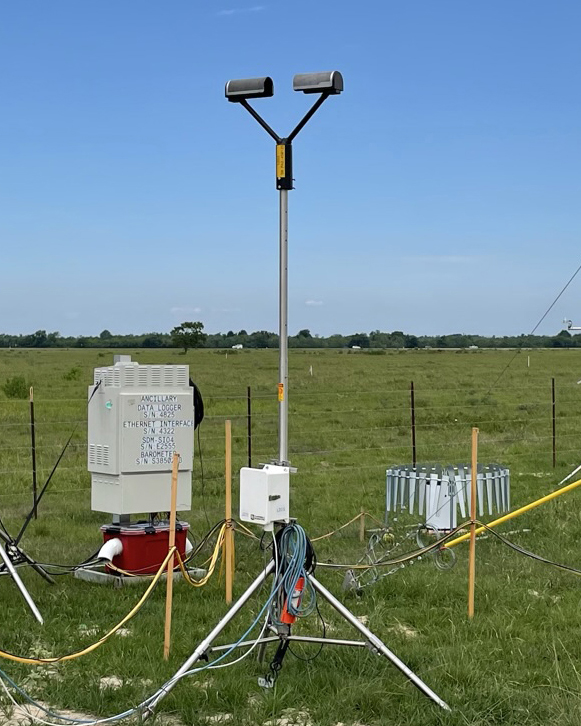New Precipitation Product Released for TRACER Campaign
Published: 14 November 2022

A new precipitation value-added product (VAP) is now available for the 2021–2022 TRacking Aerosol Convection interactions ExpeRiment (TRACER) near Houston, Texas.
The Laser Disdrometer Quantities (LDQUANTS) VAP provides quality-controlled measurements of drop size distributions (DSDs), rain rates, and polarimetric radar-equivalent measurements. It capitalizes on ongoing laser disdrometer observations from several of the Atmospheric Radiation Measurement (ARM) user facility’s fixed sites and mobile facility deployments.
DSD measurements from laser disdrometers can be used to estimate key precipitation properties, including the rainfall rate, number concentration of drops, and mean raindrop size information. For these quantities to be useful in model evaluation, radar monitoring, or other activities, disdrometer data sets require careful quality control and processing.
LDQUANTS uses standard methods adapted from the literature to filter drops with unrealistic fall speeds and extract important microphysical quantities of parameterized DSDs (e.g., gamma/exponential DSD assumptions and fitting).
In support of radar-based research interests and monitoring, this VAP also estimates radar-equivalent dual-polarization quantities (e.g., Reflectivity Factor Z, Differential Reflectivity ZDR) by using the T-matrix scattering technique for several wavelength, temperature, and drop shape assumptions.
LDQUANTS data are now available for the following TRACER sites:
- the ARM Mobile Facility and supplemental facility 1 in La Porte
- supplemental facility 2 in Pearland
- supplemental facility 3 for the ancillary site in Guy.
Learn more about LDQUANTS on the VAP web page. For questions or additional information, please contact ARM translator Scott Giangrande or instrument mentor Dié Wang.
Access the LDQUANTS data in the ARM Data Center. (Go here to request an account to download the data.)
To cite the data, please use doi:10.5439/1432694.
Keep up with the Atmospheric Observer
Updates on ARM news, events, and opportunities delivered to your inbox
ARM User Profile
ARM welcomes users from all institutions and nations. A free ARM user account is needed to access ARM data.


















